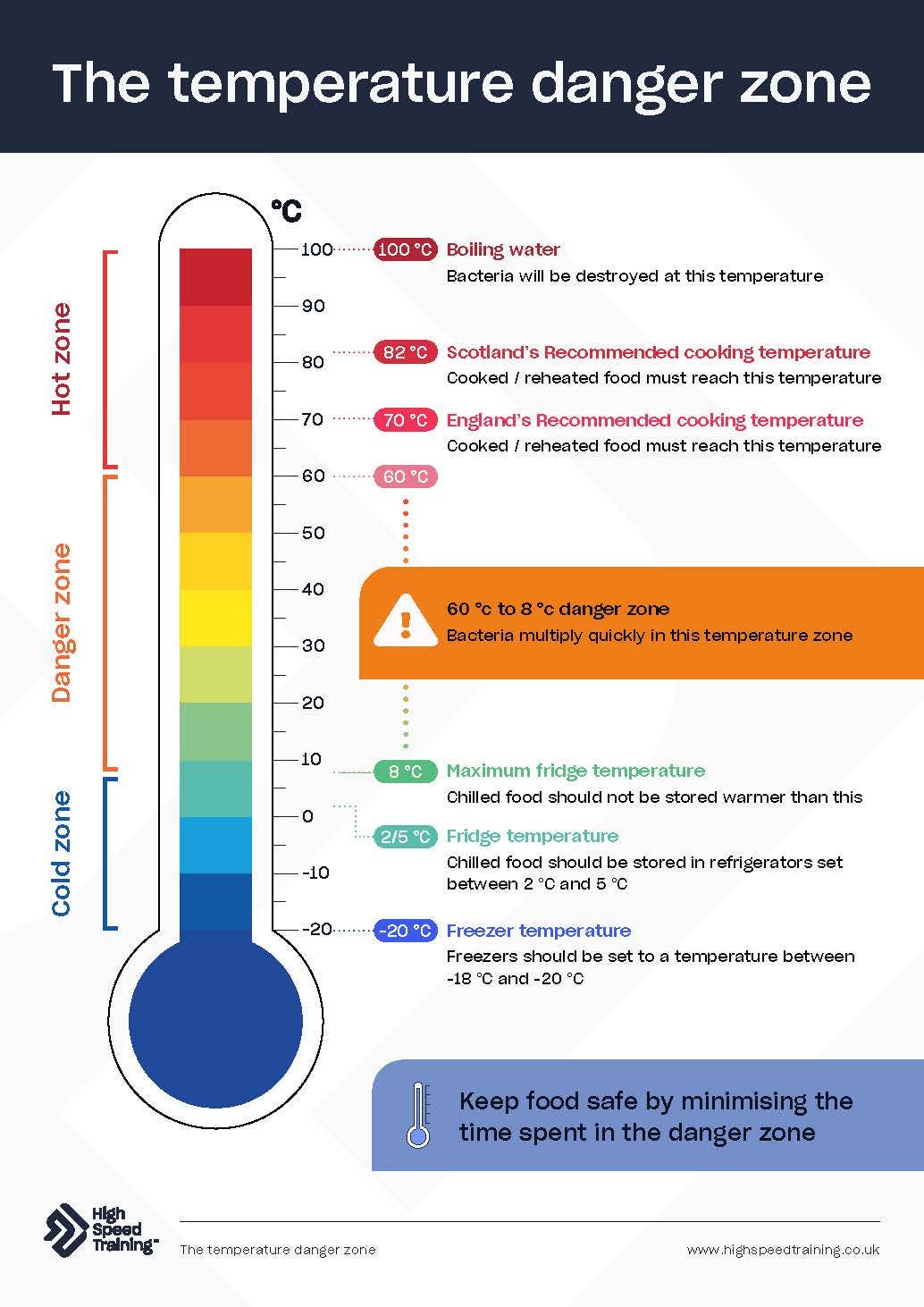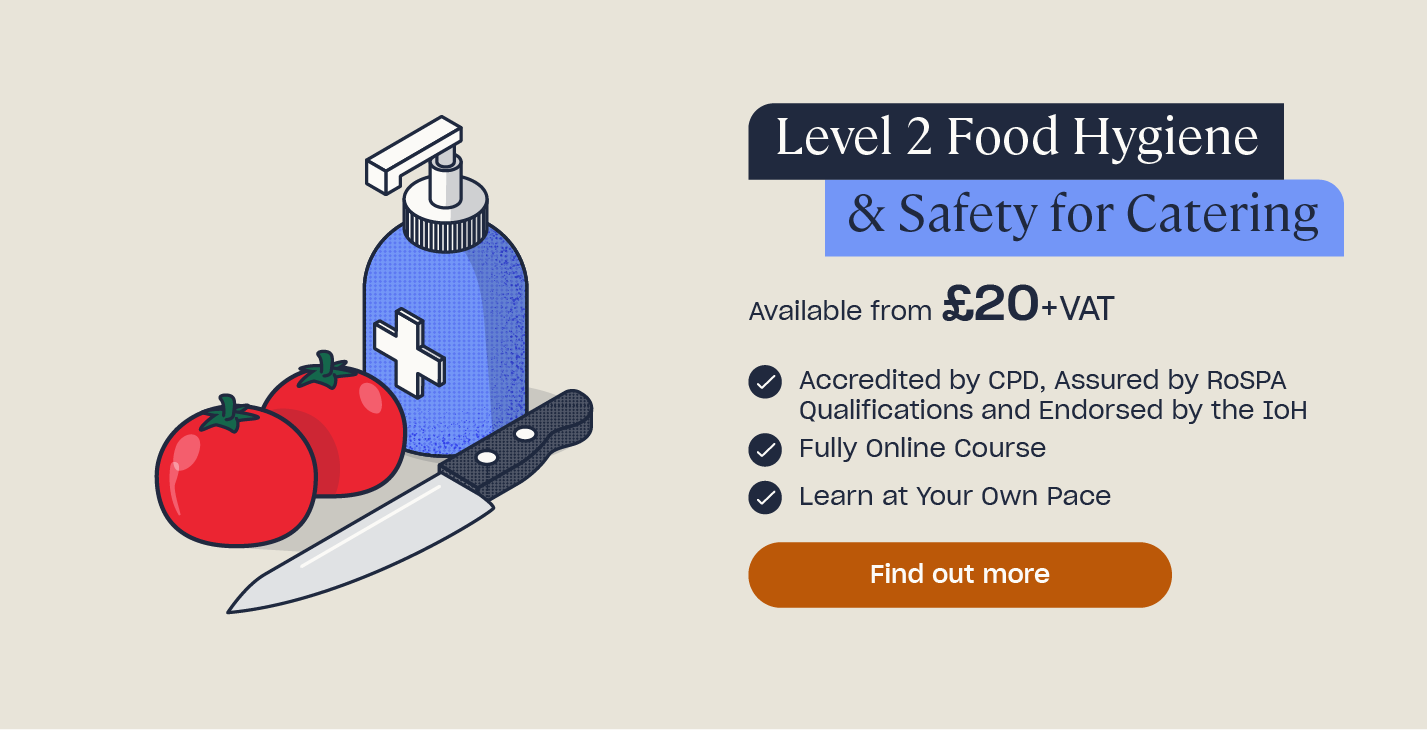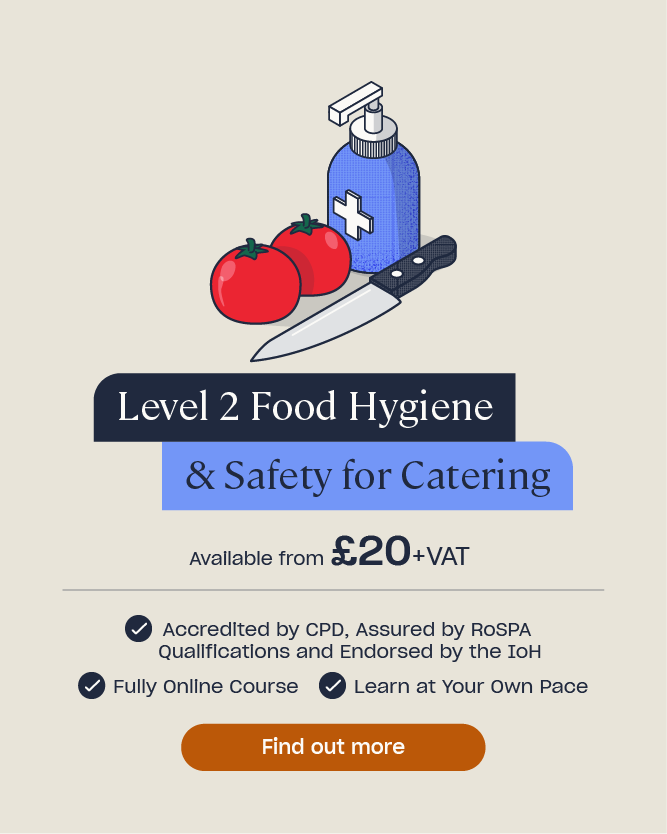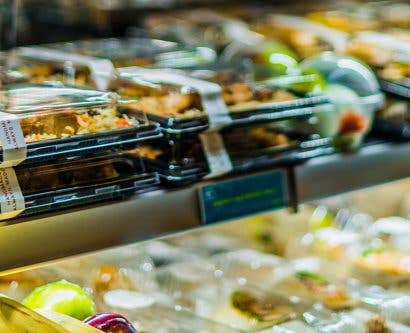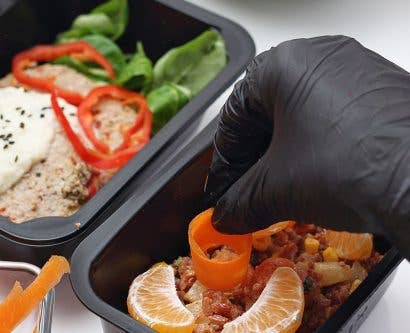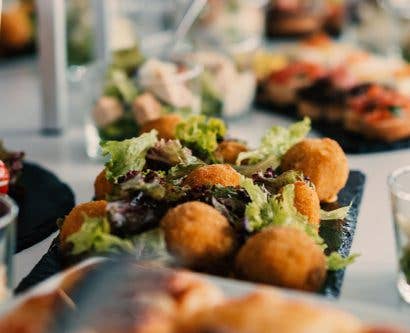What is the Temperature Danger Zone? Free Food Safety Chart
Food safety is important to everyone. Whether you are cooking at home for yourself and family or creating meals for others in a professional kitchen, all the food you prepare must be safe to eat. It is even more important that those with a responsibility to ensure food safety, such as chefs and managers, know the correct temperatures involved in cooking and storing food. Adhering to the correct temperatures, and staying out of the temperature danger zone, will help prevent foodborne illness from occurring and ensure that you have good food safety practices.
In this article, we will outline everything you need to know about the temperature danger zone and provide you with a free temperature danger zone chart which you can download for free and display in your kitchen.
What is the Temperature Danger Zone for Food?
The temperature danger zone for food is the term used to describe the temperature range where food is most at risk of developing harmful bacteria. Food in the danger zone is at risk of causing illness to anyone who handles or consumes it. Keeping food out of the danger zone will ensure it’s safe to eat by limiting the growth of bacteria.
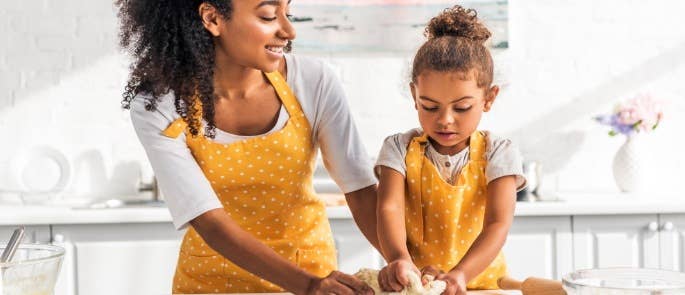
The Food Standards Agency (FSA) sets the danger zone between 8 °C and 60 °C, and this is the range you want to keep your food out of. This means that food is safest when it is either frozen, chilled, or heated beyond 60 °C. However, as best practice, we recommend food is heated beyond 70 °C to further remove bacteria.
Temperatures below 8 °C significantly slow bacteria growth – the colder it is, the harder for bacteria to multiply. As best practice, chilled food items should be kept below 5 °C. It is important to note also that freezing food doesn’t eliminate bacteria. Therefore any food that is defrosted needs extra steps, such as cooking, to ensure that it’s safe to eat. Some bacteria can even steadily multiply at temperatures of -5 °C, which is why you should always be careful when accepting frozen deliveries.
Bacteria is happiest when it is warm, and it will multiply the quickest between 20 °C and 50 °C. The optimum temperature for bacteria growth is 37 °C – the same temperature as the human body. Fortunately, controlling the temperature of food is relatively easy to do. However, you need to consider the storage of food items and how they are prepared before being consumed.
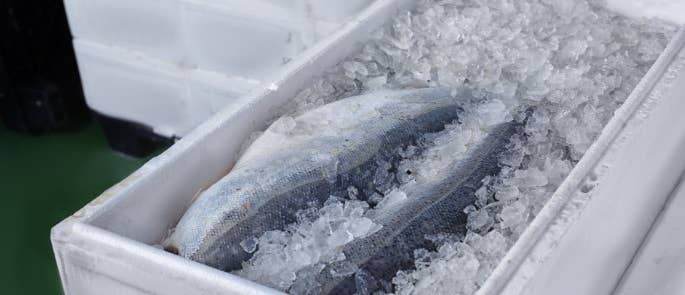
How To Keep Food Out Of The Danger Zone
Some frozen goods such as ice cream will come to your kitchen in a frozen state. As ice cream doesn’t need any further process before it is consumed you only need to keep it in its frozen state for it to be safe. However, other types of food that arrive frozen, such as frozen peas or frozen chips will have manufacturers guidelines that must be followed.
Where it is safe to cook from frozen, you should do so, as this will limit the length of time food is in the danger zone. For food items that recommend defrosting before cooking (often ready meals or raw meat), you must defrost slowly in a cold environment, such as a fridge. Bringing frozen food up to a chilled temperature will ensure the food remains safe and out of the temperature danger zone.
Similarly, foods that need chilling, such as dairy products or cooked meat, must be kept at a safe temperature. The recommended temperature range for a fridge is between 1 °C and 5 °C.
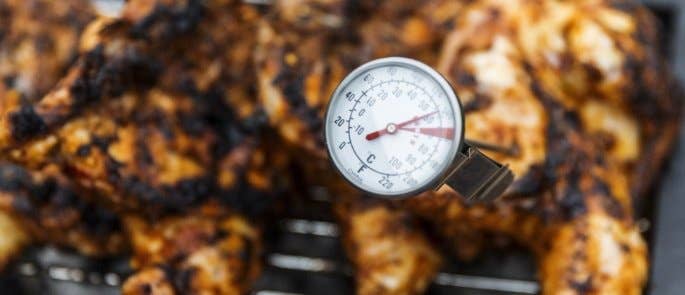
When cooking food, the FSA recommends cooking or heating it thoroughly to a temperature of 70 °C. You’ll notice this is well beyond the danger zone, which is between 8 °C and 60 °C. This is because at 60 °C bacteria growth slows down and they start to die. However, to better remove the bacteria, you need to have a combination of temperature and time. Heating or cooking food to 70 °C will reduce the time it takes for bacteria to die.
How Long Should You Cook Food For?
To safely remove bacteria from food when cooking, you must cook to a high temperature for a certain length of time. In England it is recommended that food reaches a temperature of 70 °C – in Scotland this increases to 82 °C. However, equally important is how long food remains at this temperature.
According to the FSA, food that is cooked at just 60 °C must remain at that temperature for 45 minutes to ensure that it is safe to eat – can you imagine waiting that long for your dinner in a restaurant! However, food that is cooked, or heated, to a temperature of 70 °C only needs to remain at that temperature for 2 minutes. Even better, cooking or heating food to 80 °C means it can be served after it holds that temperature for just 6 seconds.
How to Check Food Temperature
The best way to check the temperature of cooked or heated food is by using a probe thermometer. This thermometer has a metal stem, which you insert into the food. When using a probe thermometer, make sure you guide it to the middle of the dish. Don’t let it touch the bottom of the pan near the heat source, as this will give an incorrect reading. If checking the temperature of meat, guide the probe into the thickest part of the meat, taking care to avoid any bones.
When using your probe, you should see the temperature on the display screen increase rapidly. Remember to time how long the temperature stays above or at the recommended temperature. When you have finished using your probe, you must clean it properly with disinfectant wipes to avoid the transfer of bacteria.
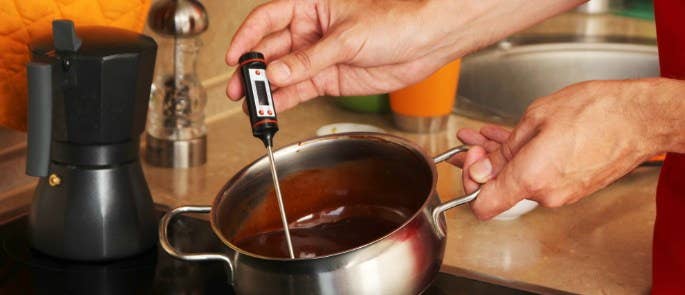
There are other ways of checking if food is cooked, especially with meat. You will notice a change in colour, for example chicken turns from pink to white as it cooks, and minced beef will turn from red to brown. You may also notice the texture of the food changes, for example you can spot this easily in baked potatoes, which become soft and fluffy when cooked. However, the safest way to guarantee food is cooked is with a temperature probe and timer.
For frozen and chilled temperatures you can also use a probe thermometer, or a thermocouple, but do so in between packaging so as not to compromise the product. You can also use an infrared thermometer. These are most useful when accepting a delivery of frozen goods, as it allows you to quickly check they are in the correct temperature zone.
For storing frozen or chilled items, the best way to monitor the temperature of the food is to monitor the temperature of the unit they are stored in. Most commercial fridges and freezers will have an electronic thermometer built in and displayed. Part of the business’s HACCP procedures will be to check and record this temperature daily for due diligence. For domestic fridges and freezers, if you are unsure, you can buy a temperature gauge and leave it in the unit. This way you can keep track and ensure your food is always at the correct temperature.
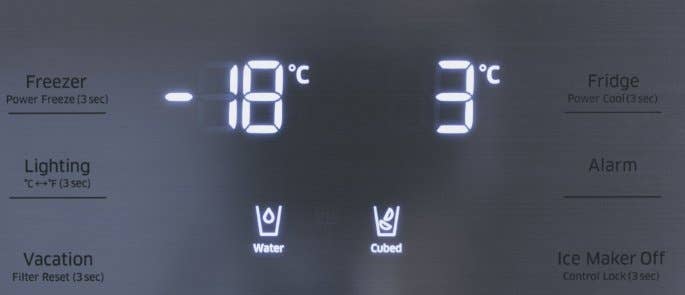
It is also important to note that the temperature of food is not the only factor contributing to bacterial growth. You must also follow other good hygiene practices in your kitchen. One of the most important things you must do is wash your hands and your utensils to avoid cross contamination. To learn more about these topics, you can read our free hub articles on How to Handwash Effectively and What are the Four Types of Food Contamination?
Free Temperature Danger Zone Chart
We have created a Temperature Danger Zone Chart to show clearly what the danger zone is, which you can download for free and display in your kitchen. The chart serves to remind you of the temperature danger zone and how to keep food out of it. Simply click on the button below to download it:
Further Resources:
- Level 2 Food Hygiene & Safety for Catering
- Washing Food: How & Why Should We Do It?
- Fridge and Freezer Temperature Log Sheets for Kitchens
- Food Safety Myths and Facts
- Health and Safety in the Kitchen Quiz
- What Colour Chopping Board Do I Need?
- Core Temperature Log Sheets: Guidance for Home Cooks
- How to Accept Frozen Food Deliveries: A Safety Checklist
- Serving Medium Cooked Burgers – Safety Guidance
- How Long Does Food Last in the Freezer? A Storage Guide
- Safe Temperatures for Food Storage: A Free Guide to Cooling and Chilling Times


